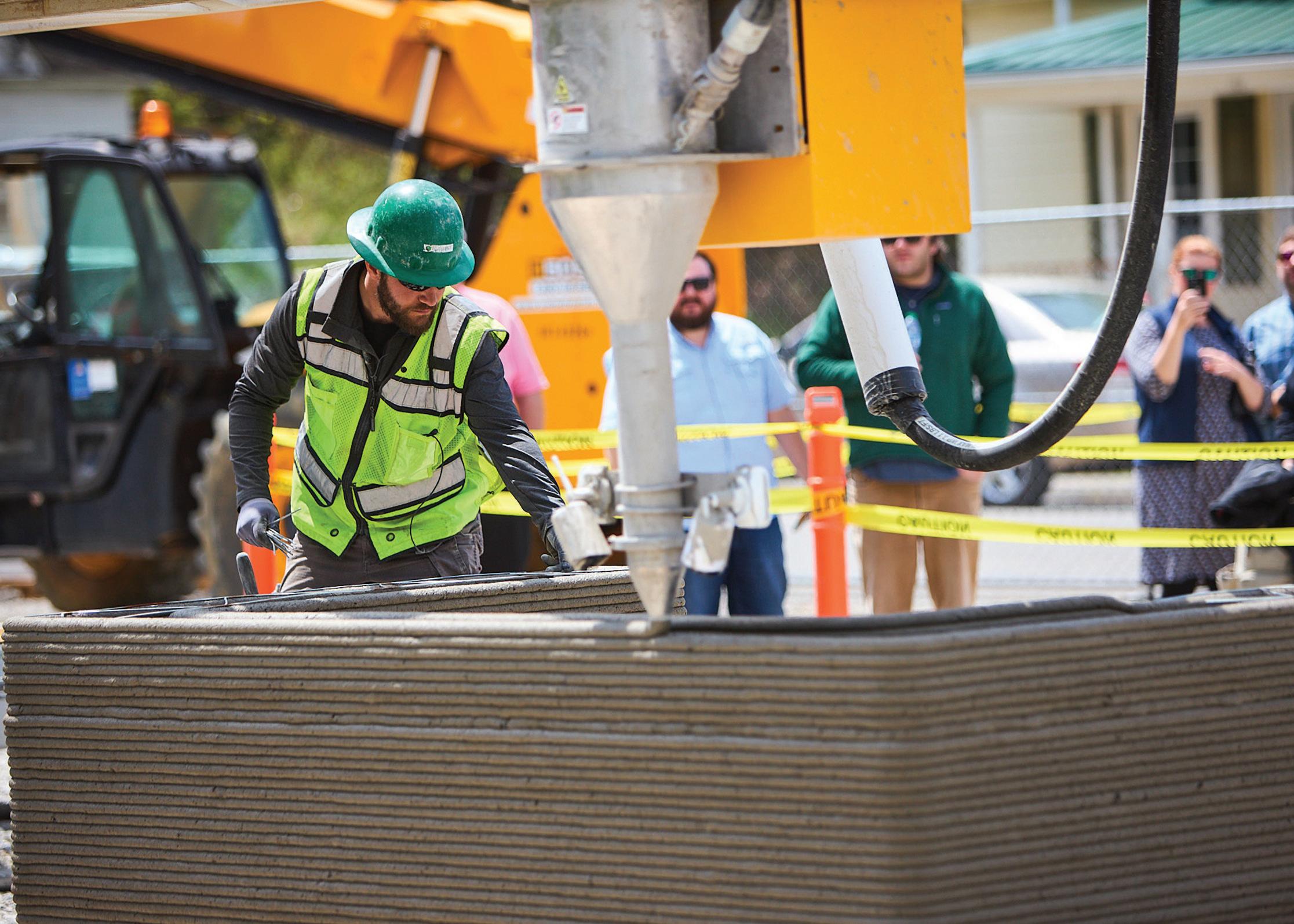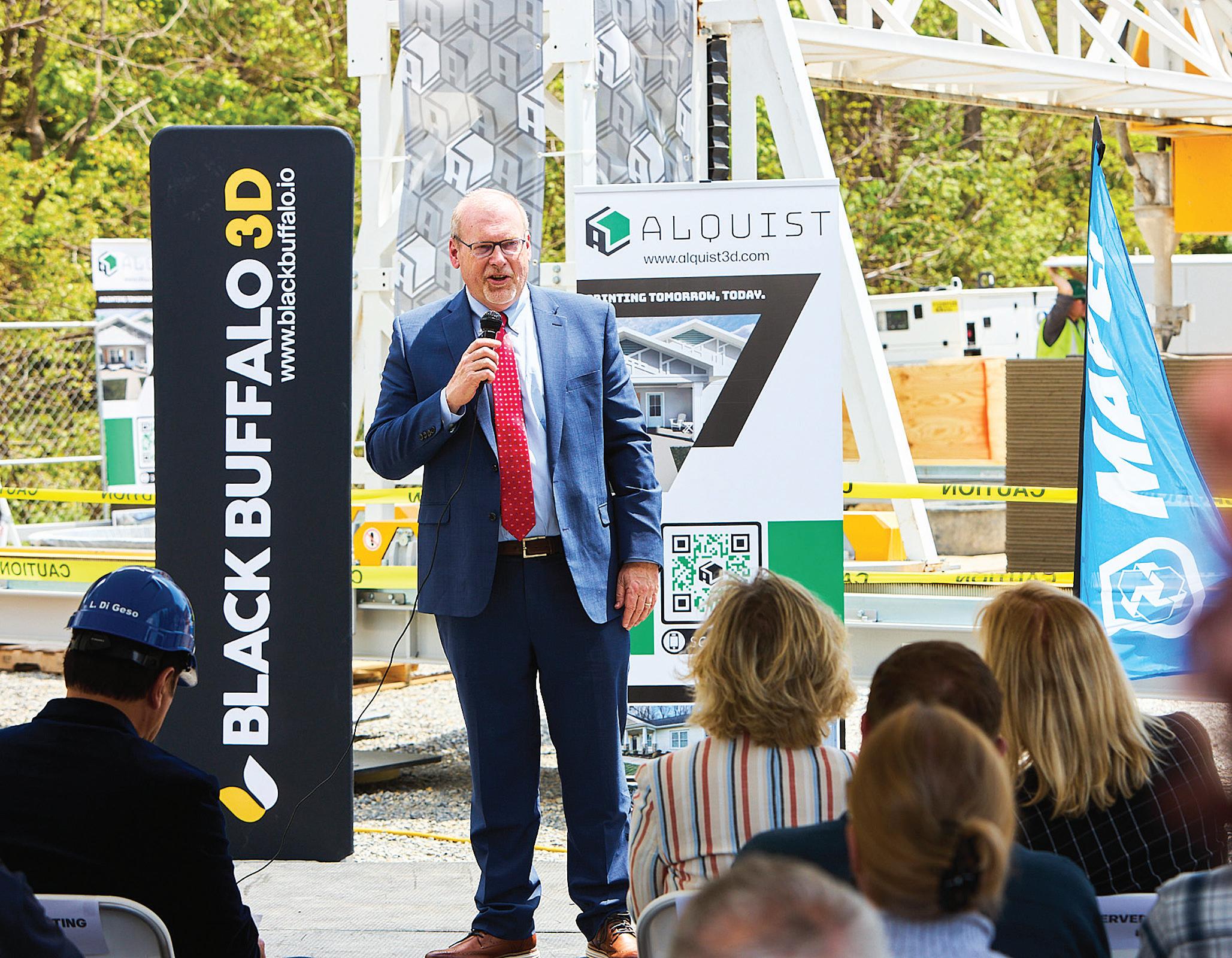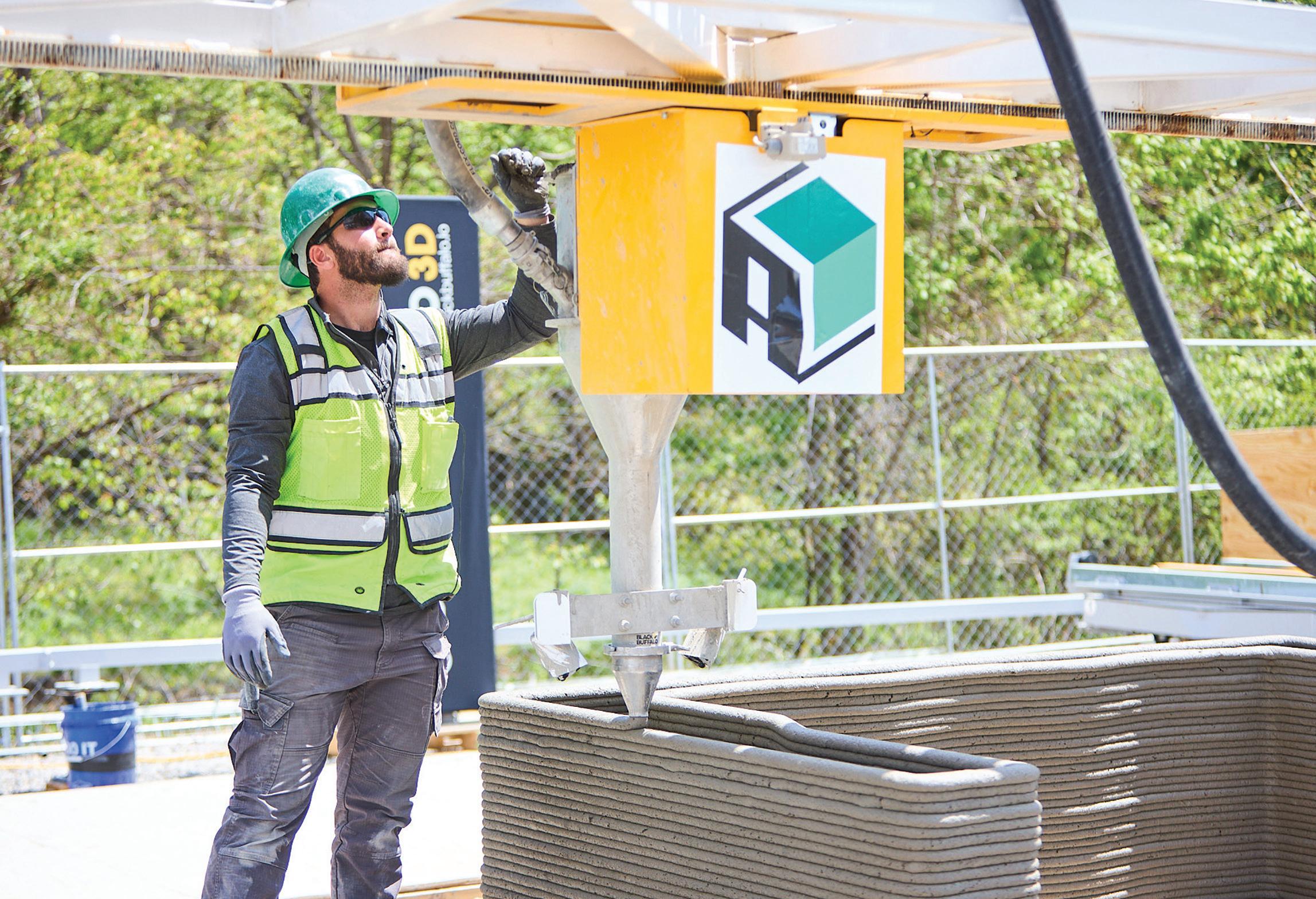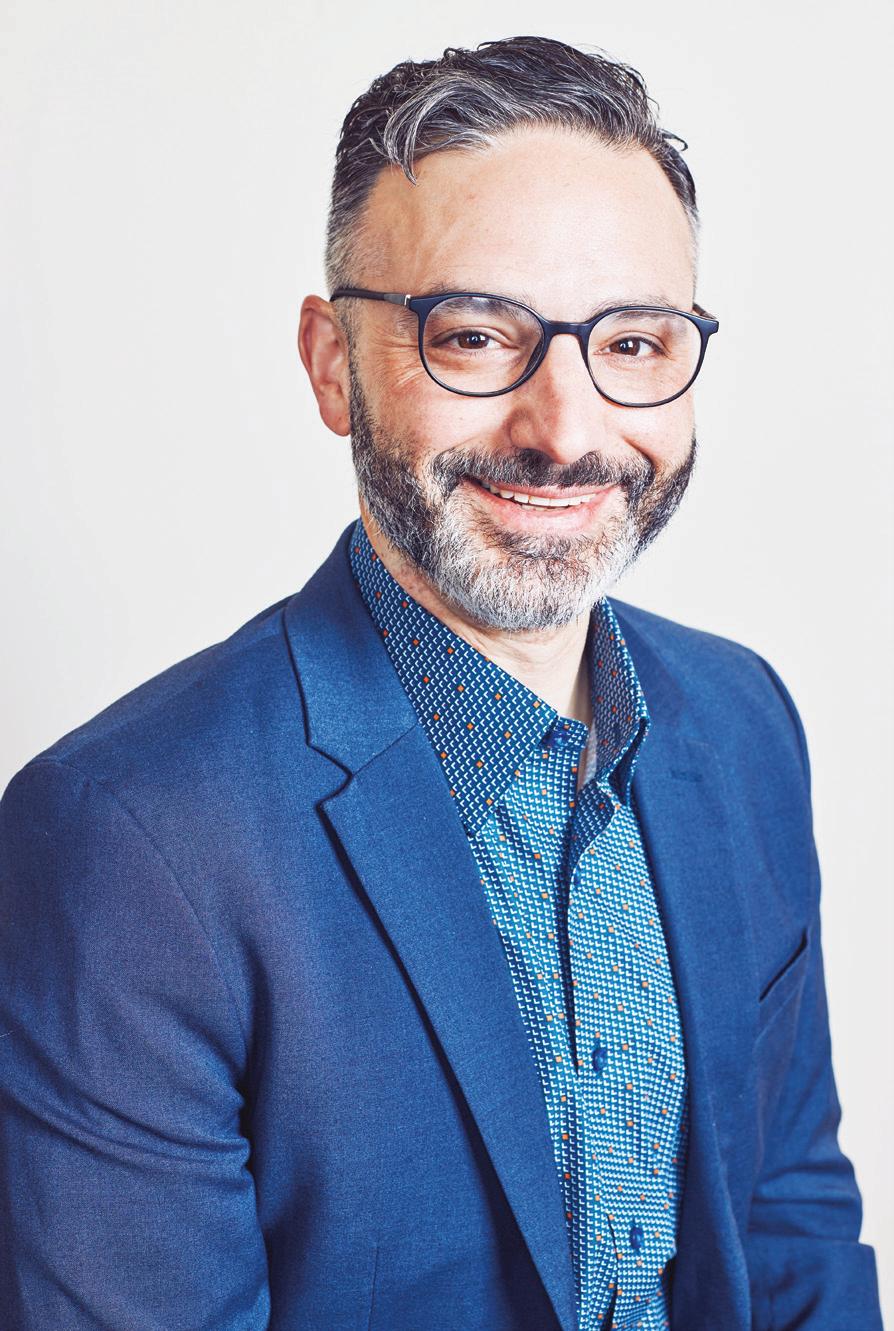
5 minute read
3D Home Construction
Alquist Pulaski project
Submitted photos
Advertisement
"WE ARE DUE FOR ADVANCEMENTS" 3D printed houses: a reality coming to the region soon
By Gene Marrano
With home ownership becoming more out of reach for many, 3D “concrete ink” may be the answer. A pilot project in Pulaski to build lower cost 3D houses is underway.
As home sale prices skyrocket in the region like they are in many other places, owning a house could soon be out of reach for many people, especially those on the lower end of the income scale or just embarking on a career that pays well – but not well enough to buy a dream home perhaps. On top of that lumber prices are up sharply since the pandemic began – 50% by some accounts. “A typical stick built home now costs, on average, $25,000 more than it did in 2020,” according to Iowa-based Alquist 3D, which adds that, “now is the time to address the shortages nationwide, with bold action.”
Here's where 3D comes in – printing some of the materials used to build a home, ditching the lumber in many cases needed for concrete forms churned out by a “printer,” where the dimensions are programmed in digitally. Alquist 3D, which partnered with Habitat for Humanity Peninsula & Greater

Rep. Morgan Griffith at Pulaski 3D build
Williamsburg to create the first 3D-printed home to be owner occupied in the United States, has now embarked on an ambitious plan to produce 200 lower cost, affordable homes in the Commonwealth. Project Virginia is what Alquist 3D Founder & CEO Zachary “Zack” Mannheimer calls it. That project got off the ground recently in Pulaski, where the first 3D houses are in the process of going up. 9th District Congressman was among those who showed up for the groundbreaking, as were officials from the Volvo Trucks plant in Dublin and other nearby manufacturers. “We have so many people that need affordable houses right now,” said Town of Pulaski Mayor Shannon Collins at the late April groundbreaking, “we’ve got jobs coming to town. We really need it. Hopefully this will be the beginning of something huge for Pulaski.”
That’s the goal: “there’s multiple ways to solve this issue but we believe 3D printing technology is the best way to do it,” says Mannheimer. Alquist is named for a character in a 1920 satirical play by a Czech playwright, where robots speed


up the manufacturing process in a facility – before they take on human emotion and eventually battle with the humans that program them. Mannheimer has a theatrical background incidentally; the Alquist naming is hopefully tongue in cheek and not prophetic. To wit according to the company:
• The single-story, three-bedroom, two-bath home Alquist built for Habitat for Humanity in Williamsburg took only about 22 hours to print the exterior shell. Those are the same type homes that will be produced in downtown
Pulaski. Next year will come the first two-story 3D printed home in America says Mannheimer. Multi-family and townhomes are on the to-do list as well within the next 24 months; Alquist is partnering with localities around the state on those upcoming projects.
• It takes at least 2-3 weeks less than the standard construction schedule, cutting nearly 15% off of costs.
Mannheimer believes with economies of scale those labor savings will be even greater in the future. And it doesn’t take away jobs from plumbers, electricians, HVAC techs etc. that are still needed to complete the 3D houses.
• 3D printing enables builders to use less lumber — a major benefit since lumber availability and prices have been highly volatile.
Alquist has spent almost four years researching large scale 3D printing and has partnered with Black Buffalo 3D and its NextCon printer on the project. Project Virginia will be the world’s largest 3D-printed construction: 200 homes around the state starting in Pulaski, according to Mannheimer. It could take 4-5 years. Why start in Pulaski? Alquist 3D says demand for housing is soaring there thanks to the more than 3,000 new jobs that Volvo, Blue Star Manufacturing, and American Glove Innovations among others will create in the area. The New River Valley was recently identified by Brookings Institute as having one of the highest growth rates in the nation for tech jobs in the U.S. Those workers will need affordable homes near their jobs says Alquist and that’s where unique housing that lowers construction costs via 3D printing comes into play.
build new roads, elevator shafts, retaining walls, and other traditional concrete structures using 3D printing technology. The company is also collaborating with Virginia Tech on smart building applications that will come standard in all Alquist 3D homes under the moniker “Raspberry Pi.” It monitors the indoor air quality, smoke/ fire detection, energy consumption, space utilization and security. Mannheimer says large scale 3D printing is getting faster all the time as the technology keeps developing.
He also says the construction trade hasn’t changed much in the past 100 years when it comes to homebuilding. “We’re due for advancements.” Only a handful of companies on are the 3D house printing bandwagon right now – Mannheimer says they often get several dozen calls an hour as less expensive ways to provide home ownership are sought. Folks in rural America have known this for years he says, but the rest of the country is “waking up,” now to the housing crisis. It will take “both private and public dollars working together” to solve what he calls a systemic problem. After Pulaski look for Alquist 3D homes to be built in Roanoke (maybe in the Norwich neighborhood by late this summer) and Newport News.
Zack Mannheimer said in late April data showed at the time there were just 3-4 homes for sale in Pulaski County priced between $150,000 and $400,000. For a blue-collar worker making a topflight wage or even for a degreed professional perhaps a few years out of school and doing well, its not much of a choice when it comes to affordable housing. “They can’t attract and retain their talent, and [many] folks can’t get back to the American Dream of home ownership. That’s the goal here – how do we provide these [houses] for folks looking to be homeowners?”

Zack Mannheimer










